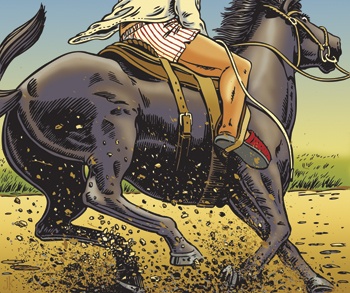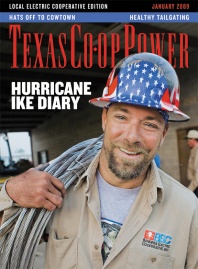A cantankerous black stallion named Old Whip might be one of the great, unsung heroes of the Texas Revolution. The big horse was a tall, muscular half-thoroughbred that belonged to Allen Vince, a gentleman from Missouri. Vince came to Texas as part of Stephen F. Austin’s colony. We can only speculate on why the horse was named Old Whip, but it seems possible, given the stories about the horse’s independent nature, that his owner was forced to resort to the whip occasionally to modify the stallion’s behavior
Vince owned a farm east of the Brazos River where he raised cattle and some fine stock horses. In April 1836, Gen. Antonio López de Santa Anna, president of Mexico, swept through the Fort Bend area with his troops during the Texas Revolution. Fresh from victories at the Alamo and Goliad, the confident Mexican army crossed Buffalo Bayou at Vince’s Bridge. Vince fled, leaving some of his livestock behind, and Santa Anna appropriated the horses for his soldiers. He took the magnificent black stallion for himself.
Then Santa Anna led his troops onward toward Washington-on-the-Brazos. Before they had gone far, a scout caught up with them and informed the general that Gen. Sam Houston and the Texians were approaching from the rear. Wheeling Old Whip about, Santa Anna galloped back along the line of soldiers, shouting, “The enemy is coming! The enemy is coming!” Careening wildly down the lane, Old Whip crashed into soldiers and pack mules, knocking some of them to the ground in tangles of flailing arms, legs, hooves and tails. The general finally got the fractious horse under control and returned to the head of the line.
A few miles farther on, Santa Anna got word that Houston’s army had set up camp on Buffalo Bayou. It was early afternoon, but the general ordered his soldiers to put up his tent so he could take a siesta.
While El Presidente slept, the Texian army crept to within 200 yards of the Mexican camp and charged. Caught by surprise, the Mexicans sought safety in retreat. Santa Anna stuck his head out of his tent and saw that his army was suffering a humiliating defeat. Wearing only a linen shirt, white silk underwear and red slippers, the general sprang aboard Old Whip and dug his heels into the horse’s flanks.
Instead of carrying the general to safety, away from the Texian army and toward Gen. Manuel Fernández Castrillón, who was approaching with reinforcements, Old Whip made a dash for home. When he got near his beloved barn, the mighty horse discovered that Vince’s Bridge, the only place to cross Buffalo Bayou without getting wet, had been destroyed by Sam Houston’s army. Buffalo Bayou was a boggy quagmire. Old Whip launched into the water and stuck fast in the mud. Santa Anna abandoned the horse and hid.
A handful of Texian soldiers searching for fleeing Mexicans noticed some deer that appeared to be frightened by something in the tall grass. They investigated. Crouching in the grass was a Mexican soldier dressed in a pair of tattered uniform britches (he had scavenged some pants along the way) and a fine linen shirt. The Texians marched the prisoner back to camp, but soon the barefooted man’s feet were so sore he could go no farther. One of the Texians took pity and pulled the Mexican soldier up behind him on his horse. None of them knew the man’s identity until they passed the spot where the Mexican prisoners of war were guarded.
“El Presidente! El Presidente!” the captives called, saluting the barefooted prisoner.
Had Santa Anna not stolen Old Whip, things might have turned out differently. A more disciplined horse might have carried the Mexican president to the main body of his army. Instead, the captured general agreed to the Treaty of Velasco, sending his army back to Mexico. Old Whip just might have helped Texas secure its independence.
——————–
Martha Deeringer wrote about the first French consul to Texas in the May 2008 issue of Texas Co-op Power.


